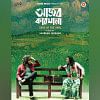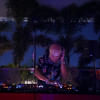What Does Sound Look Like?

What do you see when you listen to music with your eyes closed?
Some people create images of the stories told by the lyrics. Some recall memories associated with the song. Some, blessed with synesthesia, see the sounds as various colours. And some, who know a bit of music theory, see the music as shapes scattered across a two-dimensional canvas.
Like mathematical equations visualised on a graph, music can also be represented as two-dimensional pictures. The main idea is to take the pitch as the vertical y-axis and the panning as the horizontal x-axis to plot the positions of the different instruments' notes at any given instance.
In case you're wondering, a note is representative of the pitch and duration of a sound. Like how all words and sentences are written from a finite set of alphabets, notes are the building units of music.
As for panning, it refers to the positioning of sounds in a stereo field. Think of it this way: you're in a room with a person singing. The singer's position could be in front of you, to your left, or your right. This is the stereo sound system, a reproduction of this 3D field through two speakers in this way:
Centre - Your left and right ears hear the sound equally, giving the impression the sound source is in front of you.
Sides - The more a source is panned to a side, your ears hear that side more, making you feel that the source is positioned in that direction.
Now, the lower the pitch of a sound gets, the heavier and thicker it is. Instruments that produce the lowest-pitched sounds are the bass, the drums, the toms, the baya tabla and similar beat-producing instruments. They sit at the bottom of the soundscape. A bit higher up the Y-axis, you hear the bass and baritone instruments. These instruments produce very thick notes. Bass guitars, cellos, tuba, horns, contrabass etc. are commonly used bass instruments.
Beat and Bass instruments tend to be panned to the centre as they might throw the overall sound off-balance otherwise.
The midrange is a packed one. The instruments in this range are the guitar, the sitar, snare drums, the viola, the clarinet, the saxophone, and also the human voice. Note that vocal range varies from person to person. Female voices usually cover the higher mid-range while male voices cover the lower mid-range.
Midrange instruments playing the lead melody, get panned centre. Otherwise, they're panned to the sides, sometimes partially, sometimes fully. Lead vocals take the centre position while backing vocals are literally pushed to the sides.
Higher up the pitch range you find soprano and treble instruments - violins, flutes, the ukulele, mandolins and also high-pitched percussion like cymbals, hi-hats (the disc-shaped thingies in drum sets), shakers, bells. There are no conventions for panning these elements.
This is your compass for visualizing the general form of a song's soundscape. Close your eyes, figure out the instruments in use and their panning. You're already aware of their ranges, and with time will be able to distinguish movement between pitches. Graph them out in your mind with shapes and colours per your wish. You'll find that every section of every song is a journey through numerous sonic images.
Reference
Catherine Schmidt-Jones. Understanding Basic Music Theory by, Chapter 2.7: Ranges.
Sabih Safwat is always up for trying new music. Send songs to listen to at [email protected]

 For all latest news, follow The Daily Star's Google News channel.
For all latest news, follow The Daily Star's Google News channel. 








Comments